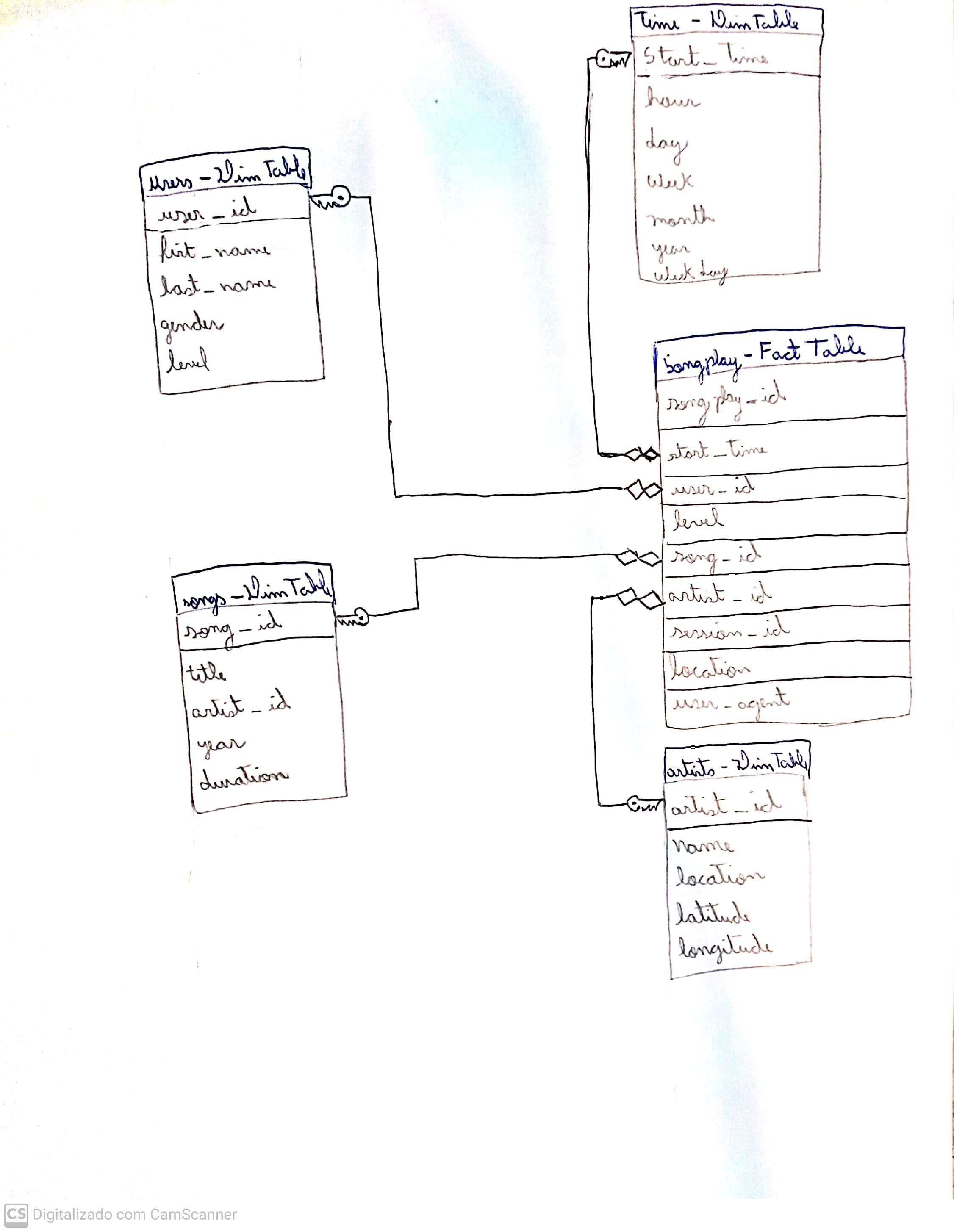- The purpose of this project is to extract songs and user logs data from AWS s3 from a music app called Sparkify, transform this data into a meaningful dimensional model with facts and dimensions on a Star Schema, and them load this data back into AWS S3 in parquet format.
- In order to best fit the needs of the startup, 5 new tables were build with PostgresSQL with a Star Schema, as follows the image:

- The songplay is the Fact Table of the Star Schema, which will be used to quickly retrieve information about users activity on the app, while the Dimension Tables users, time, songs and artists can be used to retreive the detailed information of entities present in the songplay table.
- The raw data, songs and user logs are in JSON format on the /raw partition on AWS S3, and the resulting processed tables will reside on /processed on AWS S3.
- The Storage Layer of this project will be AWS S3, and the Processing Layer will be a Spark Cluster with PySpark, the Spark Cluster will load raw data from AWS S3, process and create all 5 tables, than load the tables in parquet format back in AWS S3.
- First of all, we need to configure and create our EMR Cluster
- Configure a bootstrap.sh file and alocate it in s3, so you EMR cluster can load and install some packages on start: https://docs.aws.amazon.com/emr/latest/ManagementGuide/emr-plan-bootstrap.html. Read the
bootstrap.shfile on this repo to see an example, read this article to understand how to install packages after creating the cluster: https://aws.amazon.com/blogs/big-data/install-python-libraries-on-a-running-cluster-with-emr-notebooks/. - After that, read the
create_emr.sh.examplefile to see how you should create your owncreate_emr.shfile. Then, create your EMR cluster running the script:$ source create_emr.sh - After creating the cluster, we need to allow SSH connection to the master node, so we can copy the
etl.pyscript to the master node and submit it:
- First you need to allow SSH to the master node: https://docs.aws.amazon.com/emr/latest/ManagementGuide/emr-connect-ssh-prereqs.html. You will need to edit an Inbout rule.
- SSH to your master node:
$ ssh -i PATH_TO_MY_KEY_PAIR_FILE.pem hadoop@MASTER_PUBLIC_DNS - Once inside the master node, change the Pyspark Defaults to run Python3:
$ sudo sed -i -e '$a\export PYSPARK_PYTHON=/usr/bin/python3' /etc/spark/conf/spark-env.sh - Copy the etl script to your master node:
$ scp -i <PEM_KEY> etl.py hadoop@<MASTER_PUBLIC_DNV>:~/ - Execute it:
$ spark-submit etl.py
- Configure a bootstrap.sh file and alocate it in s3, so you EMR cluster can load and install some packages on start: https://docs.aws.amazon.com/emr/latest/ManagementGuide/emr-plan-bootstrap.html. Read the
- Now check your bucket partition with processed data and check if the tables were created. Mine were created at s3://udacity-de-files/processed.